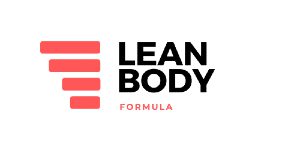How To Lose Weight On A Budget Without Compromising Your Health

The budget is not just about dollars and cents; it’s about living a life that reflects our values and priorities.
RIC EDELMAN
When it comes to weight loss, many people assume that a healthy diet and regular exercise are expensive luxuries that only the wealthy can afford. However, this couldn't be further from the truth!
With the right approach, it's possible to shed those pounds without breaking the bank. In this article, we'll provide you with expert tips and strategies for achieving your weight loss goals on a budget.
Key Takeaways
- Losing weight doesn't have to be expensive, and there are many affordable options available.
- A healthy diet is a key component of weight loss and can be achieved on a budget.
- Affordable home workouts and free resources such as fitness apps, online workout videos, and outdoor activities can help you achieve your fitness goals without costly gym memberships or equipment.
- Meal planning can help you save money while eating healthy, and there are many budget-friendly recipes and meal prep ideas available.
- Intermittent fasting, portion control, and mindful eating are low-cost weight loss strategies that can be effective without expensive supplements or diet plans.
- Budget-friendly weight loss apps can help you track progress, provide meal plans, and offer workout routines without breaking the bank.
Creating A Budget-Friendly Diet Plan
Losing weight on a budget is possible, and it all begins with a healthy diet. While it's easy to get carried away with expensive health foods and supplements, sticking to a budget-friendly diet plan can be just as effective. Here are some tips to help you create a diet plan that won't break the bank:
#1. Shop Smart
When creating a budget-friendly diet plan, it's important to shop smart. Make a list of the foods you need and stick to it. Avoid impulse buys and be mindful of sales and discounts. Additionally, purchasing store-brand items can be a great way to save money without sacrificing quality.
#2. Buy In Bulk
Purchasing healthy foods in bulk can be a cost-effective way to maintain a nutritious diet without overspending. Many wholesale stores offer discounts on bulk purchases, which can help you save money in the long run. However, be sure to only buy what you need and properly store excess food to avoid waste.
#3. Focus On Affordable Nutritious Foods
Contrary to popular belief, eating healthy doesn't have to be expensive. Many nutritious foods are budget-friendly, such as beans, lentils, oats, bananas, and sweet potatoes. Incorporate these foods into your diet plan to save money without compromising on nutrition.
By following these tips, you can create a budget-friendly diet plan that works for you. Remember, a healthy diet is the foundation for successful weight loss, and it doesn't have to cost a fortune.
Affordable Nutritious
Contrary to popular belief, eating healthy doesn't have to be expensive. Many nutritious foods are budget-friendly, such as beans, lentils, oats, bananas, and sweet potatoes.
Affordable Home Workouts
Regular exercise is essential for weight loss, but gym memberships and personal trainers can be expensive. However, with the right approach, you can achieve your fitness goals without breaking the bank. Home workouts are a cost-effective way to get fit without spending a lot of money. Here are some tips for creating your affordable workout routine:
#1. Use Your Bodyweight
You don't need a gym to get a good workout. You can use your body weight to do exercises like push-ups, squats, lunges, and planks. These exercises work for multiple muscle groups and can be done anywhere in your home.
| Exercise | Description |
|---|---|
| Push-ups | Get into a plank position with your hands slightly wider than shoulder-width apart. Lower your body until your chest nearly touches the floor, then push back up. Repeat for several reps. |
| Squats | Stand with your feet shoulder-width apart. Lower your body as if you were sitting down, keeping your weight on your heels. Return to the standing position and repeat for several reps. |
| Lunges | Take a large step forward with one foot, then lower your body until your front knee is bent at a 90-degree angle. Push back up and repeat on the other side. |
| Plank | Get into a push-up position, but instead of lowering your body, hold yourself up on your forearms. Keep your body in a straight line from your head to your feet. |
#2. Invest In Affordable Equipment
You don't need expensive equipment to get a good workout. Resistance bands, stability balls, and dumbbells are relatively inexpensive and can add variety to your routine. Look for deals at your local sporting goods store or online retailers.
#3. Find Free Online Workouts
There are countless workout videos available online for free. YouTube has a vast selection of fitness channels, including HIIT, yoga, and Pilates. You can also download workout apps that offer free routines and challenges. Some apps offer affordable premium features, but you can still get a great workout without paying a cent.
By creating your home workout routine, you can save money while still achieving your fitness goals. With perseverance and consistency, you can improve your health and fitness without spending a fortune.
Join Our Mailing List
See how easily you can get fitter. Sign up to get your free PDF report on 10 Actions That Support Weight Loss sent to your inbox!

Affordable Gym Alternatives
Going to a gym can be expensive, but many budget-friendly alternatives can help you achieve your weight loss goals. Consider taking advantage of free resources, such as outdoor activities like hiking, running, or biking. These activities are not only free but also provide an opportunity to enjoy nature while burning calories.
You can also find free online workout videos that require little to no equipment. These videos are usually available on YouTube and can be accessed from anywhere at any time. Many fitness apps also offer free or low-cost workout routines that can be done at home, saving money on gym membership fees.
If you do prefer going to a gym, look for low-cost alternatives, like community centres or local YMCA programs. These options often offer discounted rates and can save you a significant amount of money over time.
Remember that losing weight doesn't have to be expensive. By taking advantage of these affordable gym alternatives, you can achieve your weight loss goals without breaking the bank.

Saving Money On Diet Supplements
Weight loss supplements can be expensive and are not always necessary to achieve your weight loss goals. In fact, a balanced diet and natural weight loss methods can be just as effective without breaking the bank.
Instead of investing in expensive supplements, focus on incorporating nutritious, budget-friendly foods into your diet. These can include whole grains, lean proteins, fruit and vegetables.
In addition, try to incorporate natural weight loss methods into your routine, such as drinking water before meals, increasing your daily physical activity and getting enough sleep. By prioritising a healthy diet and natural weight loss methods, you can achieve your weight loss goals without relying on expensive supplements.
Planning Budget-Friendly Meals
Creating a meal plan is a key strategy for losing weight on a budget. By planning, you can make sure that you are buying only the ingredients you need, avoiding waste and overspending.
Meal Prepping
Meal prepping is a great way to save time and money. By cooking large batches of food at once, you can have healthy meals ready for the whole week, without having to spend hours in the kitchen every day.
Some good options for meal prepping include soups, stews, and casseroles. These dishes can be made in large quantities and freeze well so that they can be reheated quickly throughout the week.
Affordable Recipes
When planning your meals, focus on affordable ingredients such as beans, lentils, and whole grains. These foods are high in protein and fibre, which can help you feel full for longer.
Try incorporating more vegetarian meals into your diet. Plant-based proteins such as tofu and tempeh are often less expensive than meat and can be just as satisfying when prepared properly.
Shopping Smart
When grocery shopping, focus on purchasing fresh fruits and vegetables that are in season. These items are often less expensive and taste better than out-of-season produce that has been shipped from far away.
Buy in bulk whenever possible. Items like rice, beans, and oats can be purchased in large quantities, saving you money in the long run.
| Inexpensive Ingredients | Budget-Friendly Recipes |
|---|---|
| Beans and lentils | Vegetarian chilli |
| Brown rice | Stir-fry with mixed veggies and tofu |
| Oats | Overnight oats with fruit and nuts |
By following these tips, you can create healthy, delicious meals that won't break the bank.
Economical Weight Loss Strategies
There are numerous budget-friendly ways to lose weight that don't require expensive supplements or gym memberships. Here are some additional strategies to help you achieve your weight loss goals without breaking the bank:
- Intermittent fasting: This is a popular weight loss strategy that involves alternating periods of fasting and eating. By reducing the number of meals you eat each day, you can save money on food and potentially improve your health.
- Portion control: Eating smaller portions can help you reduce your calorie intake and save money on food. Use smaller plates and bowls to control your portions and avoid overeating.
- Mindful eating: Pay attention to your hunger and fullness signals when eating, and avoid distractions like TV or smartphones. This can help you enjoy your food more and avoid overeating, which can save you money on unnecessary calories.
By incorporating these strategies into your weight loss plan, you can achieve your goals without spending a lot of money.

Utilising Budget-Friendly Weight Loss Apps
One of the best ways to lose weight on a budget is to use budget-friendly weight loss apps. These apps offer a variety of features that can help you track your progress, provide meal plans, and offer exercise routines, all without breaking the bank.
Some popular budget-friendly weight loss apps include MyFitnessPal, Fitbit and Lose It! These apps offer free or affordable features that can help you achieve your weight loss goals.
MyFitnessPal allows you to track your calorie intake, monitor your macronutrient intake, and scan barcodes for quick and easy food tracking. Fitbit offers a variety of features including tracking your daily activity, monitoring your sleep quality and tracking your heart rate. Lose It! offers meal planning, recipe suggestions and weight loss challenges.
These budget-friendly weight loss apps can help you achieve your weight loss goals without breaking the bank. These apps offer a variety of features that can help you stay motivated and on track while saving money.
The Bottom Line
Here are expert tips and strategies to help you achieve your weight loss goals on a budget. Shedding pounds doesn't have to break the bank, and with these affordable solutions, you can lose weight effectively and save money at the same time.
Remember to create a budget-friendly diet plan by shopping smart, buying in bulk and focusing on nutritious foods. Incorporate affordable home workouts, free resources and natural weight loss methods into your routine. Prepare and plan healthy, budget-friendly meals and use low-cost weight loss apps to track progress and provide exercise routines. Implement intermittent fasting, portion control and mindful eating for additional economical weight loss strategies.
Make weight loss on a budget a priority and enjoy the benefits of a healthier lifestyle without breaking the bank. Start implementing these tips and strategies today and watch your body transform without impacting your wallet.
Embrace Inspiration:
Like What You Read? Be Sociable, Comment, And Share It! Thanks.
FAQ
Losing weight on a tight budget is possible. There are several strategies you can implement to achieve your weight loss goals without breaking the bank.
Here are 10 tips to help you lose weight on a budget:
1. Plan your meals and make a shopping list.
2. Cook at home instead of eating out.
3. Utilise leftovers to reduce food waste.
4. Buy in bulk to save money.
5. Focus on whole foods instead of processed items.
6. Look for inexpensive sources of protein like beans and lentils.
7. Prioritise fruits and vegetables in your grocery shopping.
8. Avoid buying unnecessary items that can add up, like soda and snacks.
9. Meal prep and plan your meals.
10. Make use of cheap and nutritious ingredients in your recipes.
Yes, eating healthy on a budget is possible. By planning your meals, focusing on whole foods, and making smart choices at the grocery store, you can maintain a healthy lifestyle without spending a fortune.
When you're on a tight budget, it can be challenging to prioritise healthy food choices. However, with proper planning and making smart decisions, you can still achieve your weight loss goals without spending a dime.
Weekly meal planning is an effective strategy for weight loss on a tight budget. By knowing what you're going to eat in advance, you can make a shopping list, reduce food waste, and avoid impulse purchases.
Absolutely! Cooking at home is not only a great way to save money, but it also allows you to have control over portion sizes and the ingredients used in your meals. This can help you make healthier food choices and stay on track with your weight loss journey.
Leftovers can be a great asset when trying to lose weight on a budget. By creatively repurposing leftovers, you can save money, reduce food waste, and have convenient options for your next meal.
There are plenty of cheap and healthy recipe options available. Look for recipes that utilize affordable ingredients like vegetables, beans, and whole grains. Additionally, there are many sources online that offer budget-friendly meal ideas.
One of the best ways to reduce food waste is through meal planning and utilizing leftovers. By planning your meals and only buying what you need, you can minimize the amount of food that goes unused.
Yes, buying in bulk is a great way to save money on groceries. It allows you to stock up on staple items, like whole grains and beans, at a lower cost per unit. Just make sure to store and use bulk items properly to avoid waste.
Join Our Mailing List
See how easily you can get fitter.
Sign up to get your free PDF report on 10 Actions That Support Weight Loss sent to your inbox!
